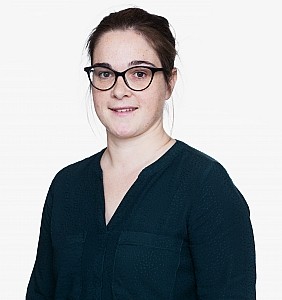PCT Direct – how to maximize your international patent application
Often a search report isn’t what you wanted. Sometimes the examiner misunderstood the invention (whether it was a language barrier on their end, or ambiguous wording on your end), and your search report doesn’t really tell you much about the ‘real’ state of the art.
Sometimes the examiner did get the invention, but misunderstood the prior art, and your search report again doesn’t really tell you much about the ‘real’ state of the art.
Sometimes the examiner got the invention, and got the prior art, but the search report just says that your claim 1 isn’t enough and needs just a bit more. But maybe that bit more was in claim 7, and the examiner dismissed the dependent claims too quickly. Maybe that bit was in the description, waiting to be promoted to your claim 1. Or maybe, the examiner was just plain wrong about claim 1 not being enough, but your winning argument was on page 12 of the description which they didn’t read.
Either way, you arrive at the end of your priority year, and want to file a PCT application, and you want more out of the next search report.
In these situations, it’s likely that you’ll add some paragraphs in the description to address the issue. Clarifying a term, putting the prior art into context, adding arguments why claim 1 is inventive over the prior art, even tweaking your claims a bit.
And then you might still get the same search report back, having paid those high PCT fees in the hopes that now they’ll get it, only to land back at square one.
Your only option now to get any kind of take on your changes or arguments during the international phase, is by requesting preliminary examination, and paying the associated fees, so you can plead your case with the examiner.

Fear not. Since the end of 2014, there’s been a little-known (or at least little-used) tool provided in the PCT system, called PCT Direct, that allows you to get a head start on the patentability discussion, without needing to request preliminary examination (or pay the associated fees).
Basically, it’s a free-of-charge way (and we know how much Patent Offices love their fees) to respond to a search report of a priority application for which you’re filing the PCT application. The only requirements are that the previous search report must have been drawn up by the European Patent Office, and that you need to make your request explicitly and file your arguments.
By requesting PCT Direct, the examiner performing the search for the PCT application, is required to take into account your arguments when preparing their international search report and written opinion. In other words, misunderstandings can be corrected, prior art can be placed in its proper context, and your case can be made, without having to pray that the examiner might read it.
What do you gain with this? Well, at the end of the international phase, you need to make the costly decision in which countries you want to continue your application. The international search report and written opinion provide for a good touchstone, giving you a better view on the chances of success of your patent application, as well as the potential scope of protection that could be obtained.
If that international search report is just a repeat or rehash of the old one, and especially if that old one wasn’t 100% relevant, then you risk flying blind when deciding where (or even if) to pursue your application further.
Is there a catch, you wonder? Not really. You spend some time or money early to prepare the arguments at the end of priority year instead of waiting until later – whether ‘later’ is in preliminary examination or even in the national examination procedures. No matter what, at some point, you will have to make your case anyhow. Chances are you have already done the mental exercise to some extent, since you’re filing an international application, so why not formulate it in a response?
Some might argue that an examiner may not take the PCT Direct arguments seriously enough, and that you may have wasted an argument. Personally, I don’t buy that. Firstly because I don’t believe that a solid argument can be wasted because of the timing of its presentation, especially during ex-parte discussions (TPO versus Opposition can be a different case, but even there I try to be an optimist). Secondly because EPO examiners aim to uphold a scientific standard, especially when it comes down to a rational, technical discussion.
And even if an examiner would fail to fully consider a valid technical argument and dismiss it without proper reason, would you let them off?
While statistics on PCT Direct are limited, the EPO did share some tidbits: In 2021, 4.659 PCT Direct requests were filed. In 2022, this rose to 5.051 (increase of 8,4%), while at the start of August 2023, 3.051 had been filed (extrapolated increase of 3,5%). The EPO issued 79.500 international search reports in 2021 and 84.083 in 2022, meaning that respectively 5.9% and 6% used PCT Direct.
In conclusion, while PCT Direct is not the ultimate must-have game-changer for any international patent application, it is a very handy tool in the arsenal of a patent attorney, and one that could be used more often.
Avez-vous une question?
Nous serons heureux de vous aider.
Prenez librement un rendez-vous avec un de nos experts.
Rassurez-vous, vous n'êtes pas seul.
Naviguez dans la FAQ. Avez-vous encore des doutes,
n'hésitez pas à nous contacter.




